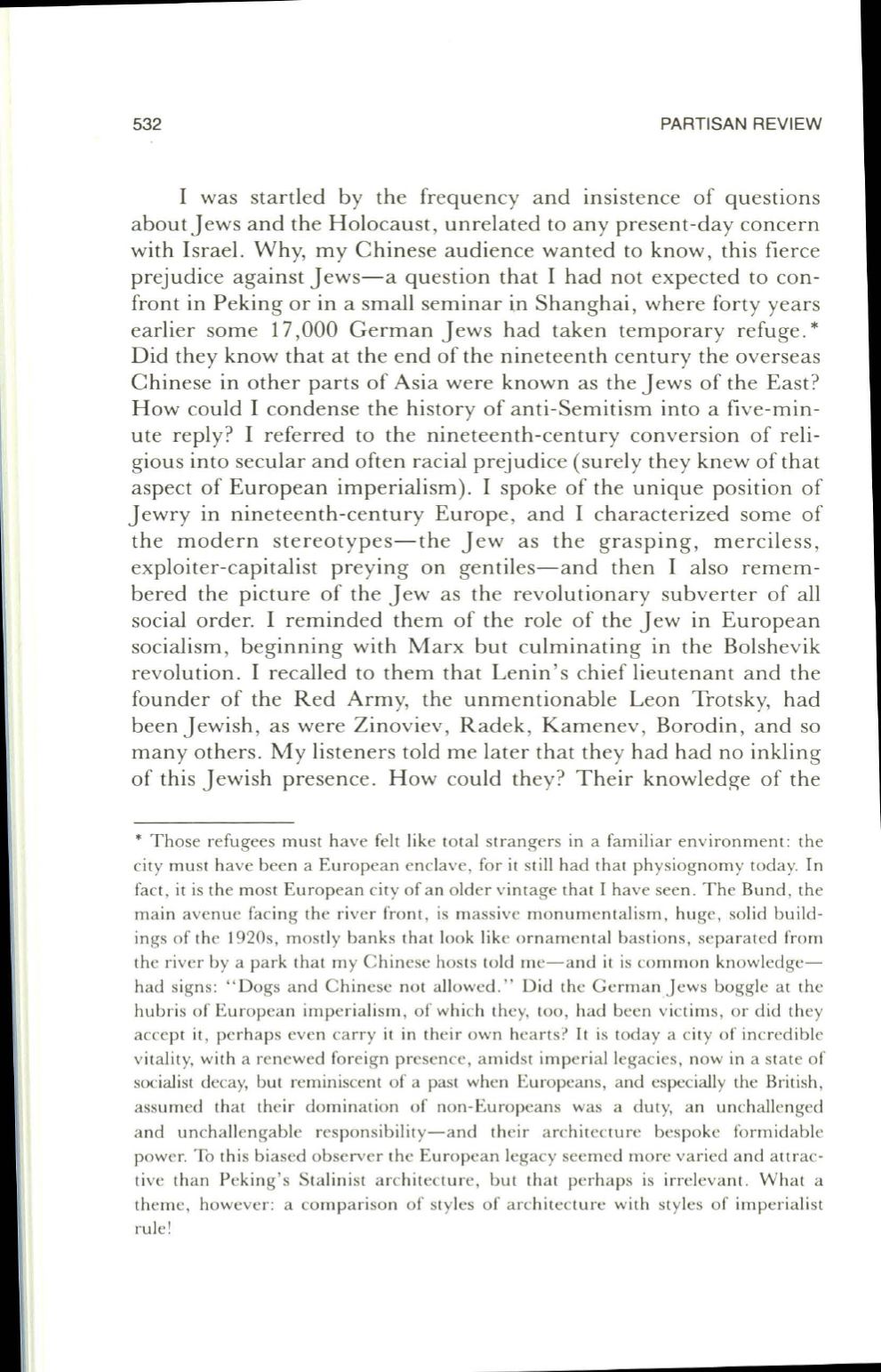
532
PARTISAN REVIEW
I was startled by the frequency and insistence of questions
aboutJews and the Holocaust, unrelated to any present-day concern
with Israel. Why, my Chinese audience wanted to know , this fierc e
prejudice against Jews-a question that I had not expected to con–
front in Peking or in a small seminar in Shanghai , where forty years
earlier some 17 ,000 German Jews had taken temporary refuge.
*
Did they know that at the end of the nine teenth century the overseas
Chinese in other parts of Asia we re known as the J ews of the East?
How could I condense the history of anti-Semitism into a five-min–
ute reply? I refe rred
to
the nineteenth-century conve rsion of reli–
gious into secular and often racial prejudice (surely they knew of that
aspect of European imperialism) . I spoke of the unique position of
Jewry in nineteenth-century Europe, and I characterized some of
the modern stereotypes-the Jew as the grasping, m e rciless,
exploite r-capitalist preying on gentiles-and then I also remem–
bered the pictu re of the J ew as the revolutionary subverter of all
social orde r. I reminded them of the role of the Jew in European
socialism, beginning with Marx but culminating in the Bolshev ik
revolution. I recall ed to them tha t Lenin 's chief lieutenant and the
founder of the R ed Army, the unmentionable Leon Trotsky, had
been Jewish, as we re Zinoviev, Radek, Kamenev, Borodin, and so
many others . My listeners told me late r that they had had no inkling
of this Jewish presence. How could they? Their knowl edge of the
• Those refugees must have felt like total stra ngers in a familiar env ironment: the
city must have been a Europea n enclave, for it still had that physiognomy today. In
fact, it is the most European city of a n older vintage tha t I have seen . The Bund , the
ma in avenue facing the river front , is massive mon umenta li sm, hu ge, solid build–
in gs of the 1920s, mostly banks that look like orn amental bastions, separated from
the river by a park that m y C hinese hosts told me-and it is common kn owledge–
had signs: " D ogs and C hinese not allowed. " Did the German J ews boggle at the
hubri s of European imperialism, of which they, too, had been victims, o r did they
accept it, perha ps even ca rry it in their own hearts? It is today a ci ty of in credible
vitality, with a renewed foreign presence, a mid st imperial legacies, now in a state of
socialist decay, but reminiscent of a past when Europeans, and especially the British,
assumed that their dominat ion of non-Europeans was a duty, an unchallenged
a nd unchallengable responsibility-and their a rchitecture bespoke fo rmidable
power. To this biased observer the European legacy seemed more varied a nd a ttrac–
tive than Peking' S Stalini st a rchitecture, but tha t perha ps is irrelevant. What a
theme, howeve r : a compa ri son of styles of a rchitecture with styles of imperi alist
rul e!


